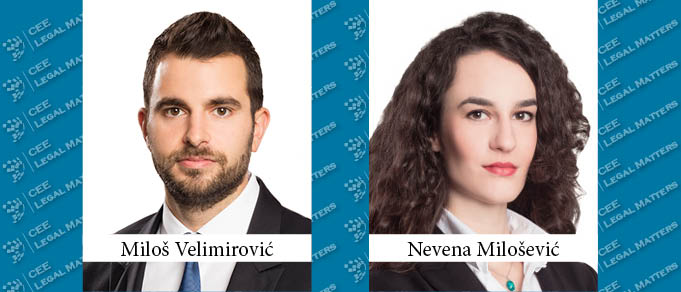The Alternative Investment Funds Act (“Act”) came into force on 19 October 2019 and applies as of 20 April 2020, except certain provisions whose application is postponed. Additionally, the Securities Commission adopted 7 bylaws implementing the Act, which came into force on 5 May 2020.
Serbian legislation distinguishes two types of collective investment vehicles: undertakings for collective investment in transferable securities (UCITS) and collective investment institutions that do not qualify as UCITS, i.e. alternative investment funds (“AIFs”).
Simply speaking, a term AIF refers to an investment which is different from conventional investment avenues such as stocks, debt securities, etc. The Act defines AIF as an investment fund that raises capital from a number of investors, intending to invest it under a defined investment policy for the benefit of those investors, which does not require authorization pursuant to the act governing open-ended investment funds subject to public offering (i.e. UCITS).
Open-ended and Closed-ended AIFs
The Act distinguishes open-ended and closed-ended AIFs. Open-ended AIF can be organized only as an AIF which does not have separate legal personality (it represents a separate set of assets), while closed-ended AIF may be established as AIF which has a legal personality (joint-stock company or limited liability company), as an AIF which does not have separate legal personality or as an AIF which has legal personality with internal management. However, the main difference between these AIFs is that holder of units of an open-ended AIF may request at any time from AIF to repurchase or redeem its units, while holders of units/shares of a closed-ended AIF do not have such right.
Types of AIFs
According to the Act, there are two main types of AIFs depending on a manner of raising capital: public offering AIFs and private placement AIFs, either of which may be organized or established as open-ended or closed-ended AIF.
1. Public Offering AIFs
The Act sets up a general rule that units/shares of AIFs should not be available to small investors (retail investors), but only to so-called semi-professional and professional investors. However, there is one exception from this rule: units/shares of public offering AIFs may be available to small investors. However, the application of provisions defining offering of units/shares to small investors is postponed until 01 January 2021.
Open-ended public offering AIFs are similar to UCITS and therefore the Act does not regulate the offering of shares of such AIFs in detaile but refers to the act which regulates UCITS. On the other hand, the Act defines that shares of a closed-ended AIF may be offered publically if its shares are listed on a regulated market. Additionally, the Act sets up limitations for public offering AIFs’ assets investments and its exposure towards specific assets.
2. Private placement AIFs
According to the Act, private placement AIF may be organized/established as general AIF or as one of the special types of AIFs. The Act distinguishes several special types of private placement AIF, depending on assets into which AIFs’ property is invested:
- Private equity – AIF that invests directly in companies with the aim of improvement of those companies, with the eventual goal of selling the company for a profit. At least 70% of private equity’s assets must be invested in companies, while up to 30% of its assets can be invested in other properties, in accordance with the investment policy. Additionally, private equity must be established for a limited period.
- Venture capital – AIF that invests in startups or other early-stage companies that show high-growth potential. At least 70% of venture capital assets must be invested in this type of companies, while up to 30% of its assets can be invested in other properties, in accordance with the investment policy.
- Real Estate Private Placement AIF – AIF that must invest at least 70% of its assets in real estate, while up to 30% of its assets can be invested in other properties, in accordance with the investment policy.
- Fund of Funds – AIF that must invest at least 70% of its assets in other AIFs, while up to 30% of its assets can be invested in other property, in accordance with the investment policy. Fund of funds may be established as AIF which invests in hedge funds, venture capital, private equity, specialized AIFs, or fund of funds that invest in different types of AIFs.
- Hedge fund – AIF that invest in different types of highly risky property, with an aim to provide the highest investment returns possible as quickly as possible. Only professional investors can invest in a hedge fund.
- Specialized AIF – AIF that invest primarily in one particular industry or goods, in accordance with the investment policy. Specialized AIF’s name must contain a particular industry or goods into which it invests. At least 70% of specialized AIF’s assets must be invested in specific industry or goods, while up to 30% of its assets can be invested in other properties, in accordance with the investment policy.
Additionally, according to the Act, there are two more special types of AIFs: European venture capital funds (EuVECA) and European social entrepreneurship funds (EuSEF). After the accession of the Republic of Serbia to the European Union, it will be possible to incorporate these funds, in accordance with the relevant EU regulations.
This text is for informational purposes only and should not be considered legal advice. Should you require any additional information, feel free to contact us.
By Milos Velimirovic, Partner, and Nevena Milosevic, Associate, Samardzic, Oreski & Grbovic

